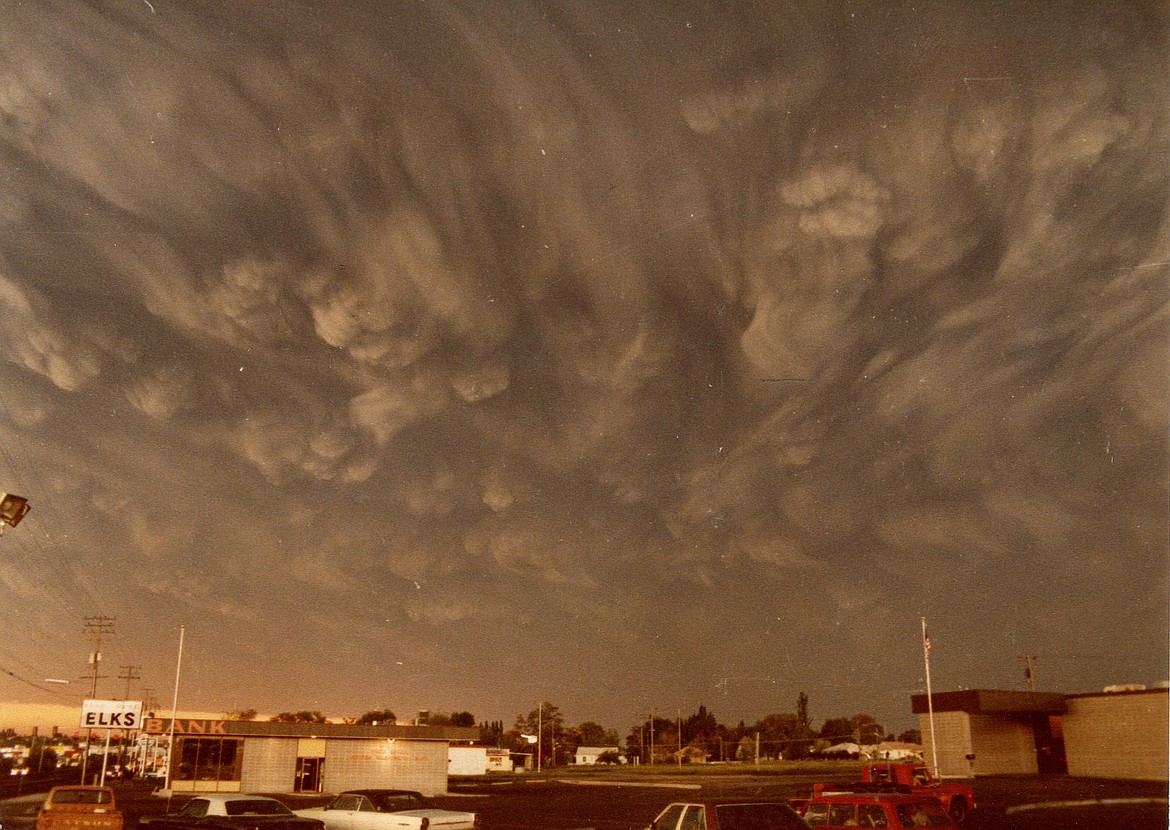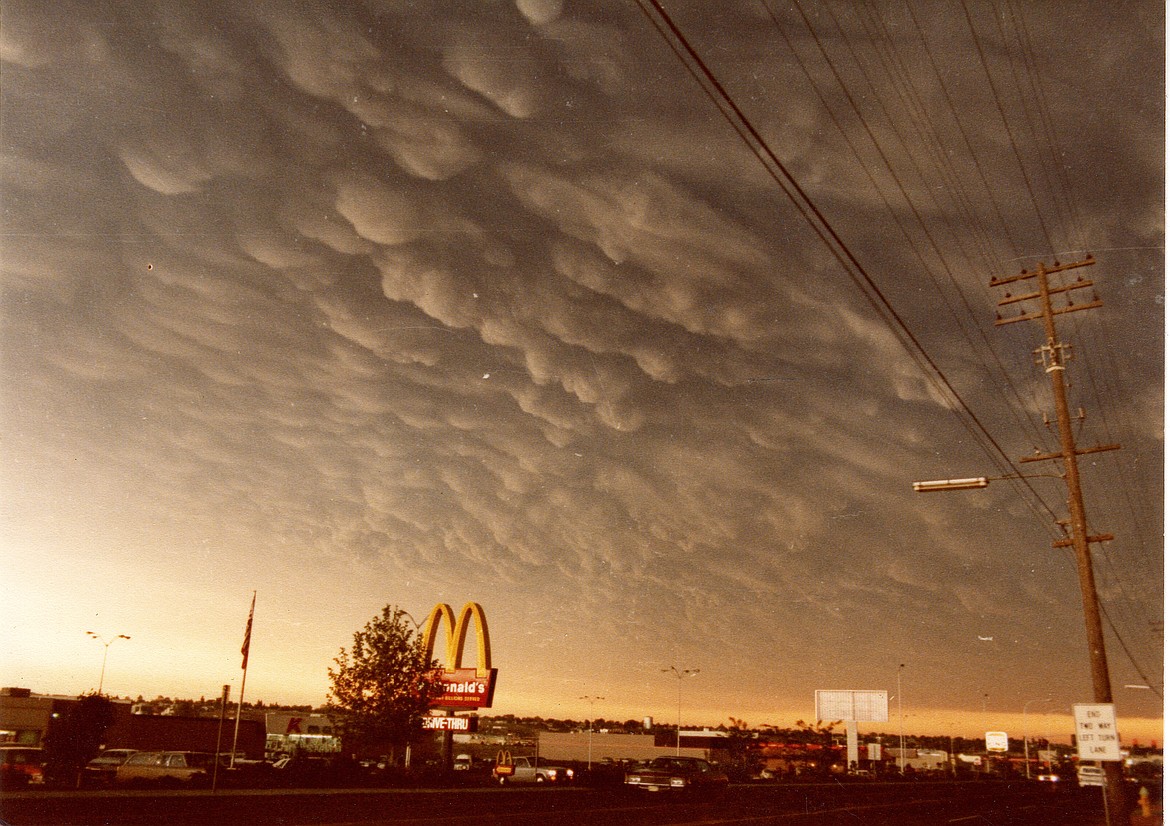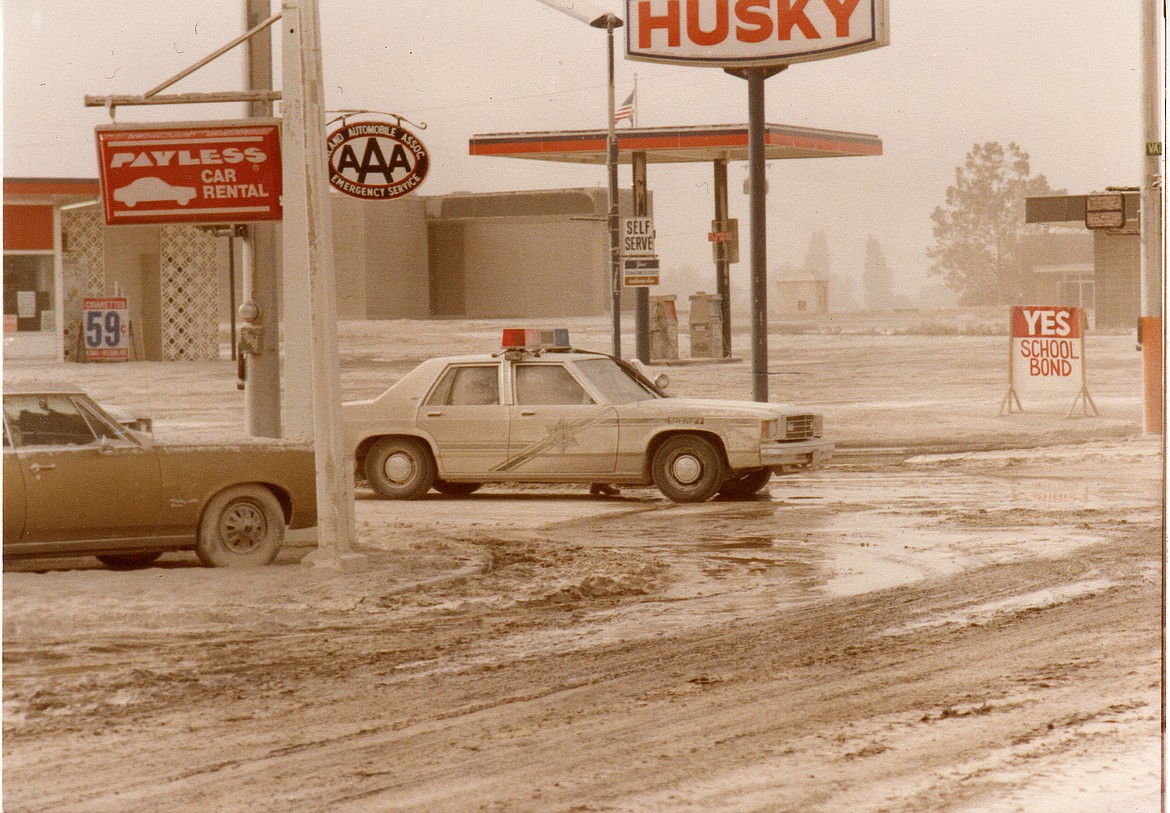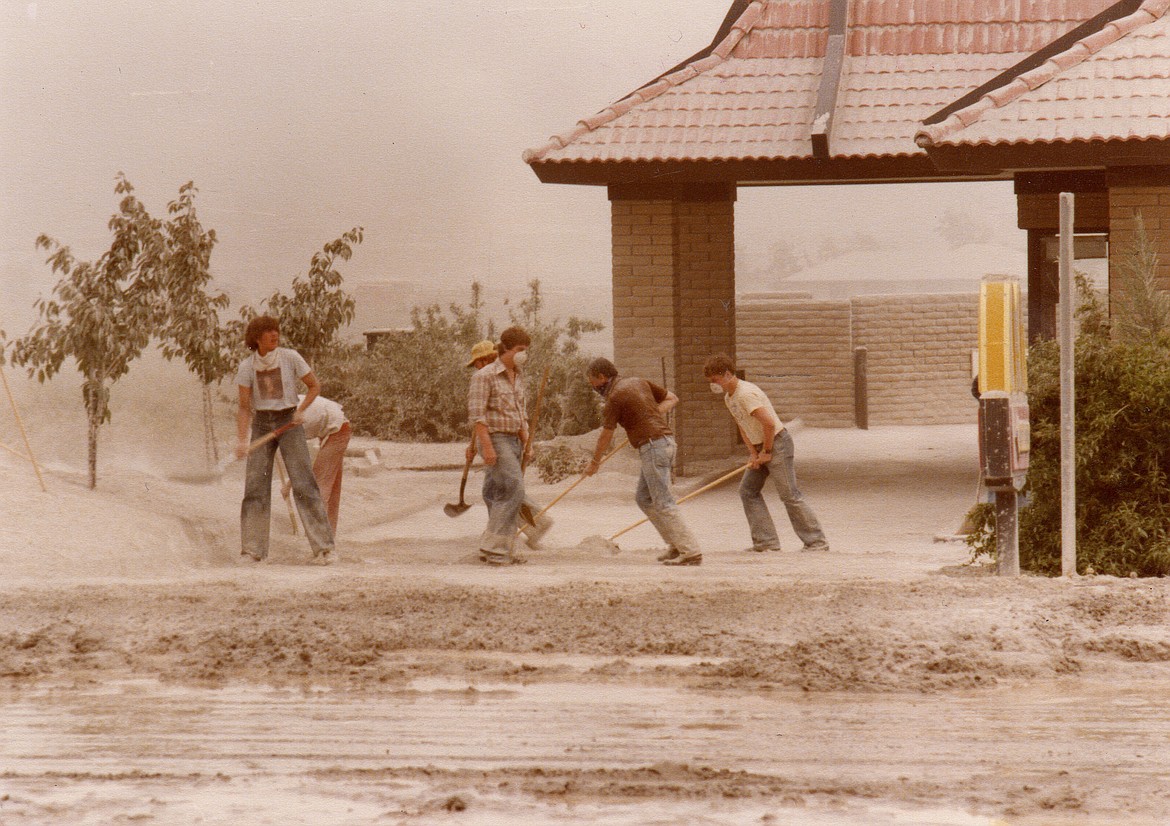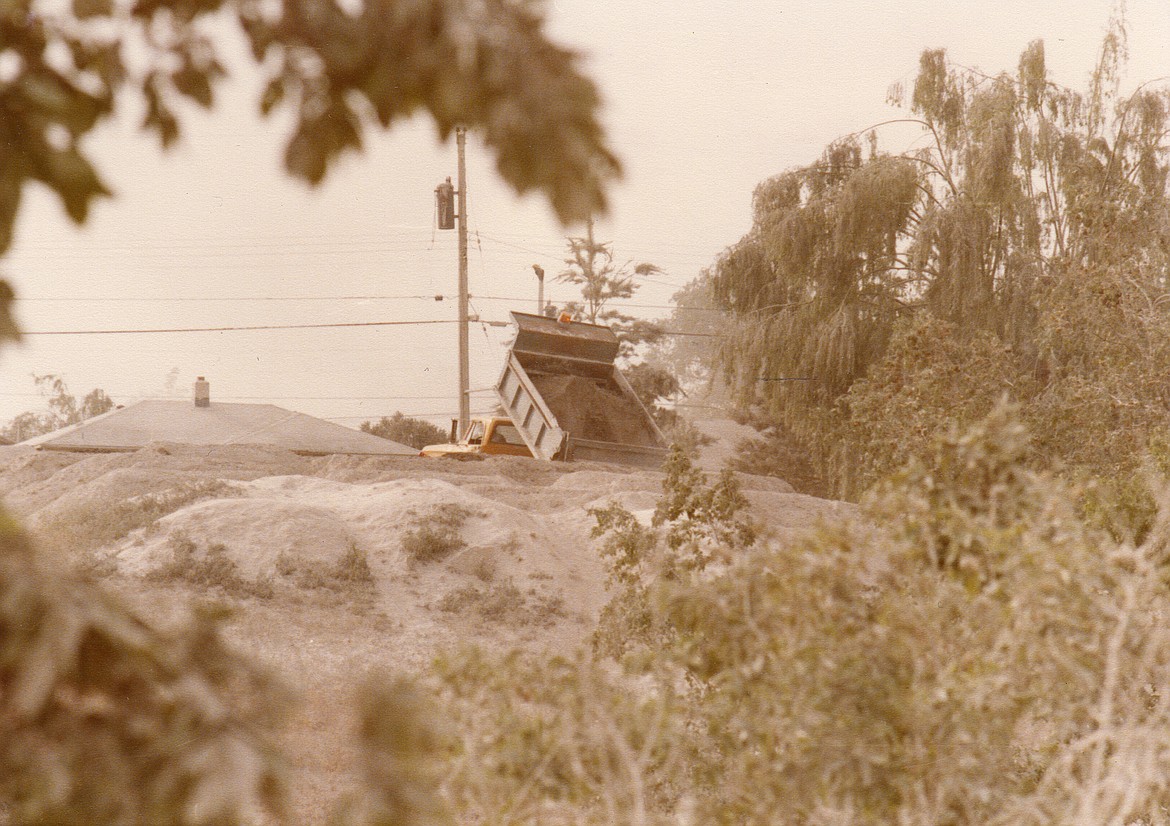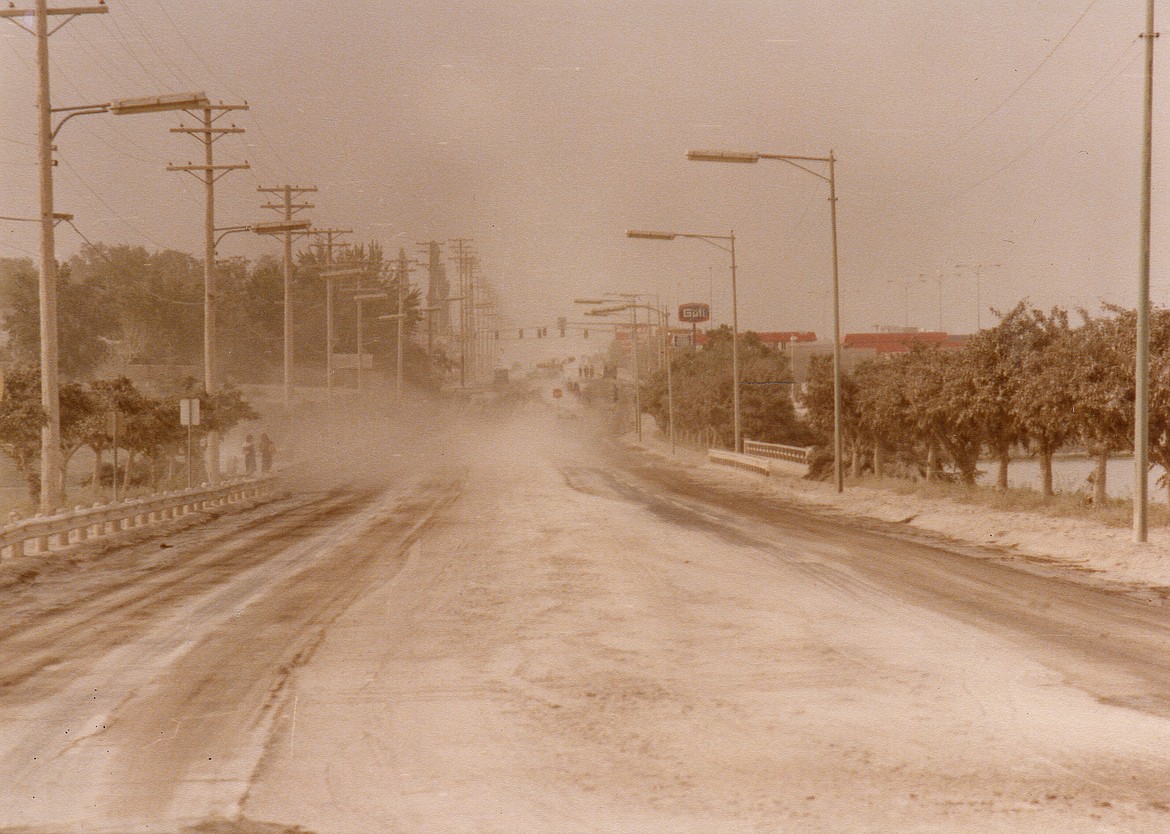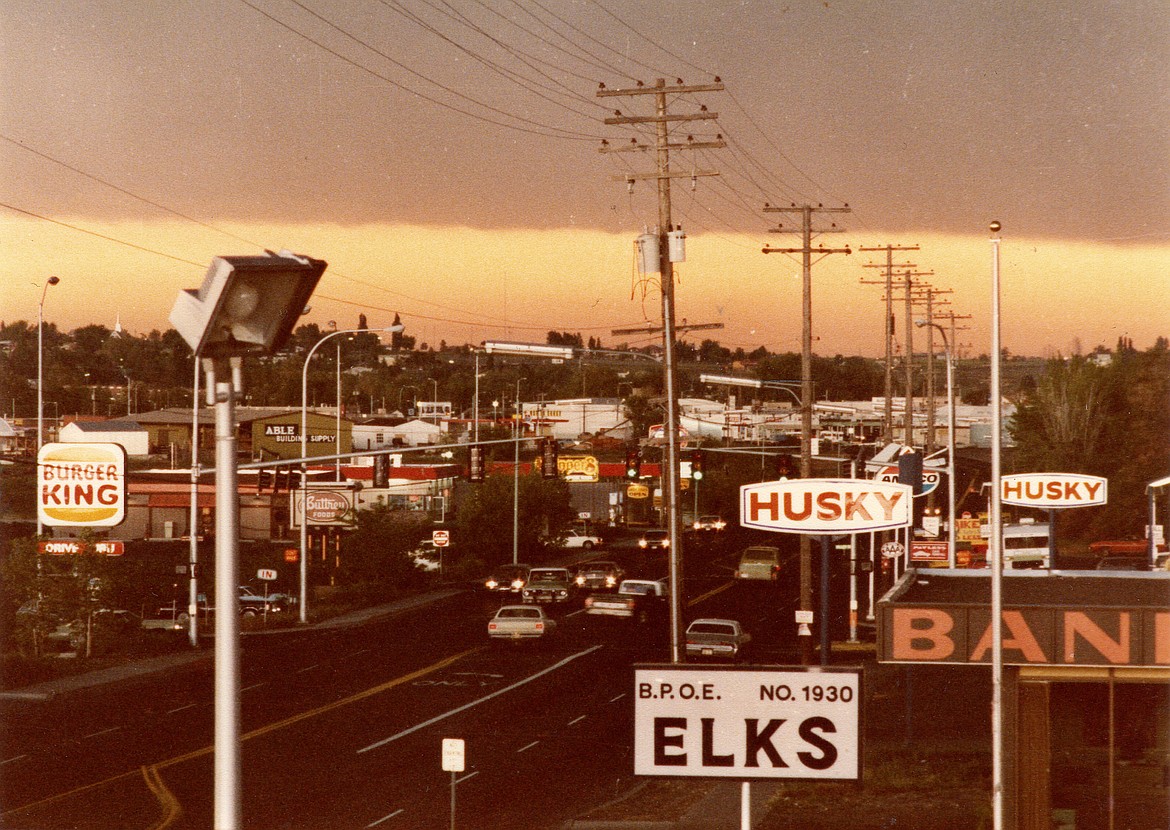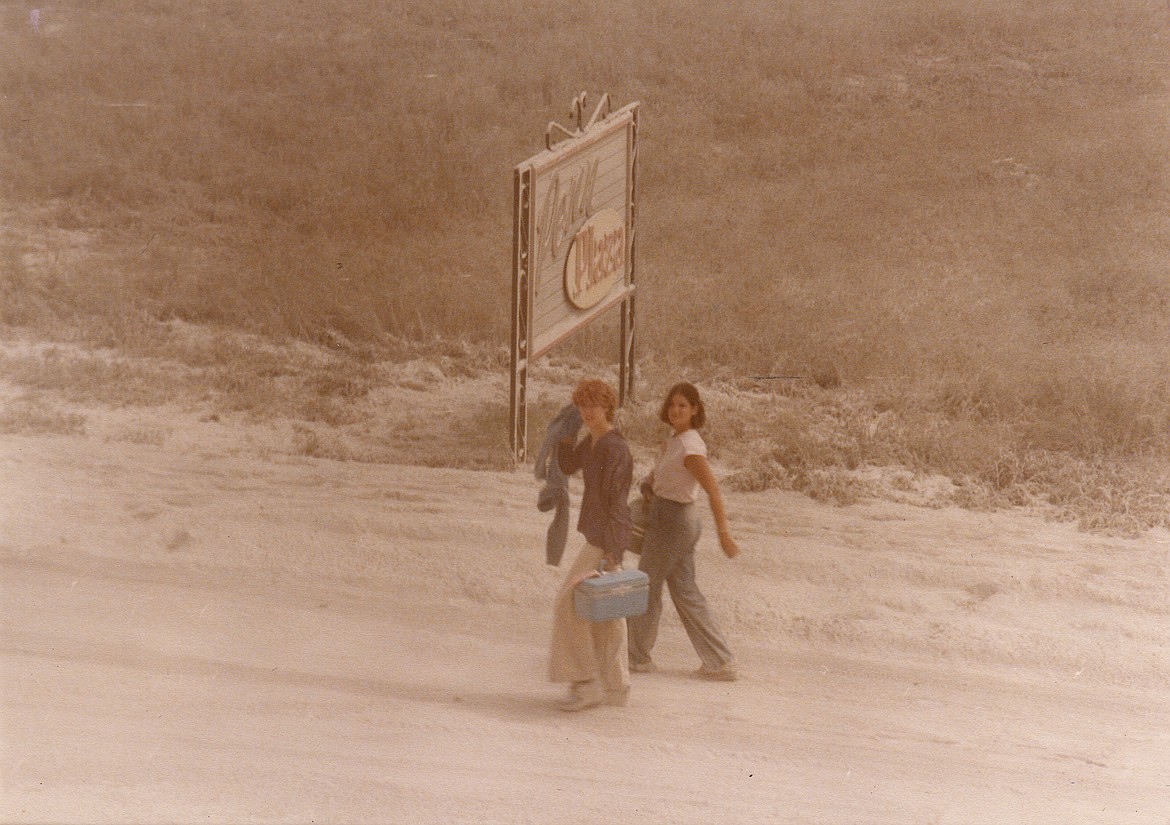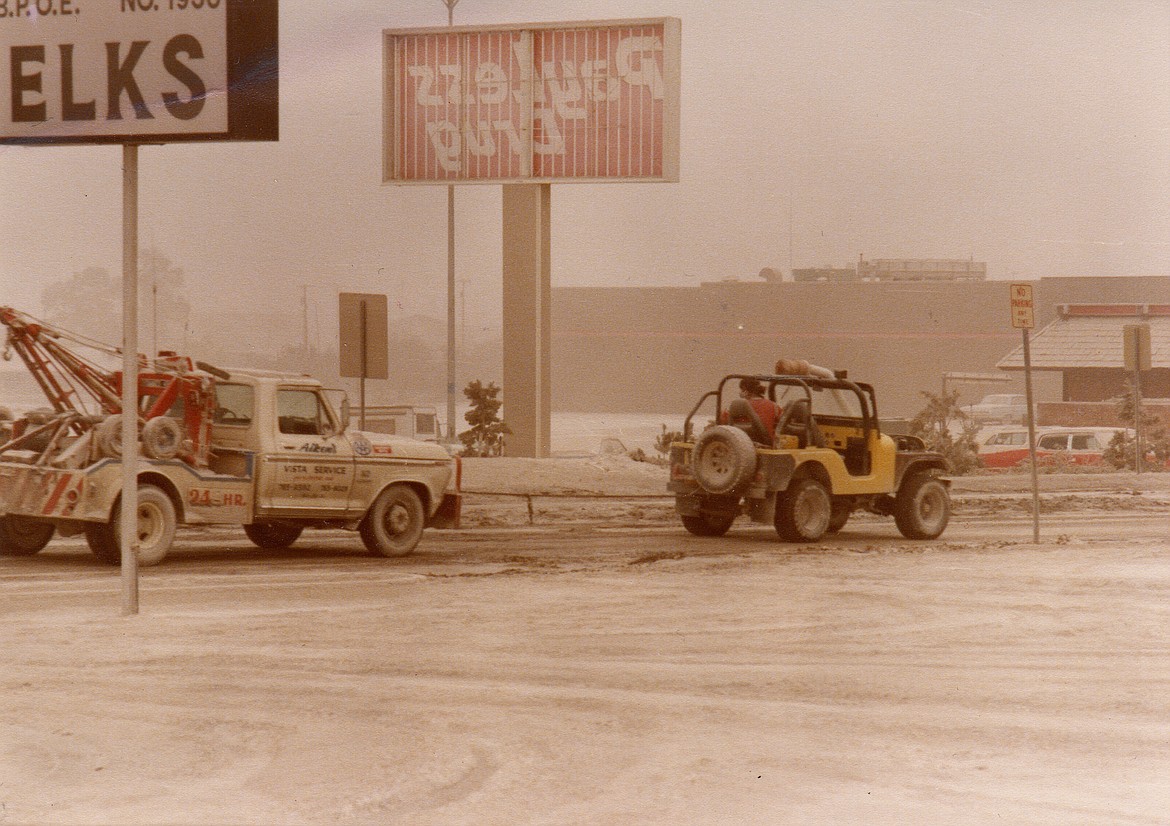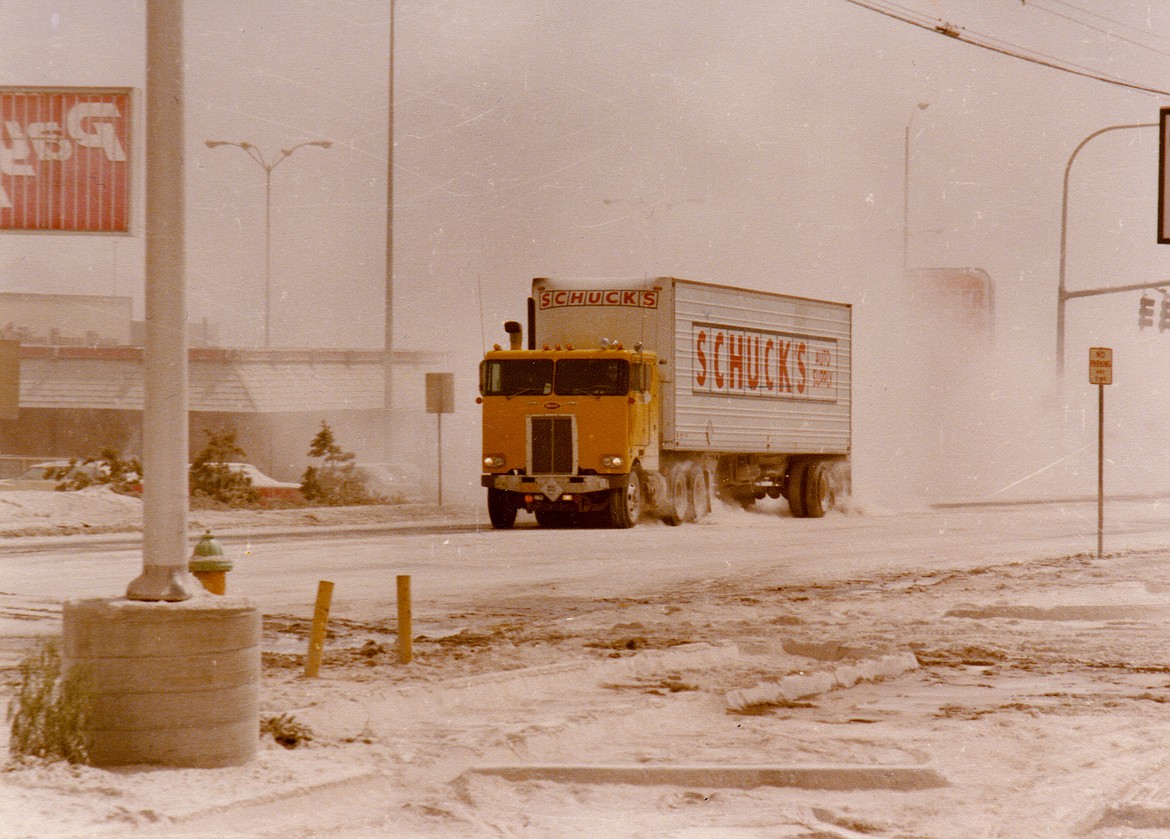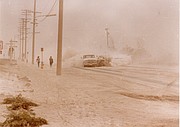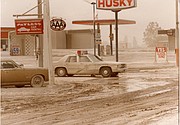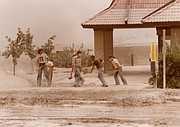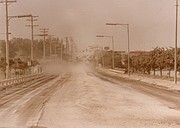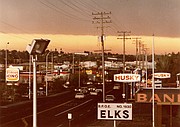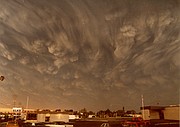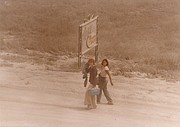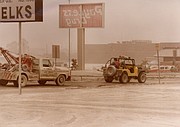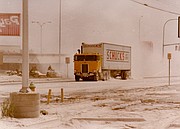Mount St. Helens anniversary generates flood of memories
MOSES LAKE — The 40th anniversary of the eruption of Mount St. Helens produced a flood of reminiscences.
On the morning of May 18, 1980, an earthquake and eruption blew out most of the mountain’s north slope. The column of dirt and pulverized rock, about 12 miles high, followed the prevailing winds – right over Grant and Adams counties.
That Sunday in Moses Lake was a sunny day, but about noon people started seeing what looked like an approaching thunderstorm. Brian Edwards, writing on the Columbia Basin Herald Facebook page, said it was a warm day, warm enough that the church he attended had the side door open.
“Off in the distance a dark cloud on the horizon – a cloud that looked like a massive storm front headed toward us.”
Frank Jones, writing on the “You Know You’re from Moses Lake” Facebook page, said he thought the same thing. “Boy, were we wrong,” he said.
(Many of the comments in this story are from the “You Know You’re from Moses Lake” page.)
Jones was heading out of town that day. “No idea what it was – no (car) radio. Cool kids listened to cassettes then,” he said. “It (the ash cloud) was behind us. Didn’t look back until Spokane.”
“By some time after noon, while driving home, a gentle snowfall began. Dirty snow – and warm,” Edwards remembered.
“If you walked barefoot in the ash it was warm,” Anita Williams said.
“By afternoon it was dark. Pitch black. No light could penetrate that darkness,” Edwards said.
“I have never seen it so dark, as it fell. We had a streetlight right at the end of our driveway, and you could not even see the light of it as the ash fell,” Anita Williams said.
“Was the ash toxic? What happens if you breathe it? What happens if you get it on your skin? We didn’t know,” Edwards wrote.
Moses Lake Police Department records show the ash cloud arriving about noon, with an ash fall that lasted at least 10 hours. “When it started to get light outside (on Monday), it was so quiet,” Anita Williams said. No bird or insect sounds, she remembered. “Nothing to see but ash,” she said.
“The ash covered everything. Three inches of powdery fluff, like someone had spilled a bag of gray flour over the entire earth,” Edwards said.
And that was when the hard work started, what Edwards called the “nearly impossible task of cleaning up.”
“Like living in an ashtray,” wrote Cheryl Greene.
The ash was fluffy and swirled like snow, but it was also gritty and damaged machinery. “The police were reduced to bikes,” Edwards said.
“There weren’t two police cars running in town after the first four hours,” Gary Grove wrote. “Police were reduced to doing patrols on small motorcycles borrowed from Chet’s Honda on Third Avenue.”
“Snorkels started appearing as folks tried keeping their intake valves above the cloud of powdery dust that enveloped the car as you drove,” Edwards said.
Grove remembered spending hours working on county and city police vehicles. “Flushing out motors and running an air hose from the air cleaner to a tractor air filter to the back seat of their cars,” Grove said.
Lori Dickson’s dad used toilet paper to protect his air filter. “Now there’s a valid reason for overbuying toilet paper,” she said.
Diana Eckstedt cut a piece of foam for her air filter, washed and dried it every night. “Fun times,” she said.
School was canceled for the rest of the year, and at first R.T. Williams, 14 years of age at the time, thought that would be a good thing. “Then it turned out to be the worst summer ever,” he wrote.
“All we did was clean that stupid ash. We had to get up on our roof and clean that stuff off, we had to clean off the grass, and then there was the lady next door who couldn’t do that herself, and we had to go help her,” he wrote.
Even after the initial cleanup, the ash was a problem for R.T. Williams. “When we started mowing lawns again, it was terrible because the amount of ash that it would bring up in the air was really bad,” he said.
“I agree it was an experience,” Edwards wrote. “An experience I wouldn’t care to go through again.”
Cheryl Schweizer can be reached via email at education@columbiabasinherald.com.



